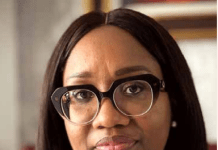
Dr Olu Aloba is a registered pharmacist and consulting pharmaceutical scientist, with decades of experience as a drug developer and, more recently, as a consultant on drug and biologics development strategies. He bagged his pharmacy degree from the University of Benin (UNIBEN), followed by master’s and PhD degrees in Pharmaceutical Science from St. John’s University, in New York. He is a subject matter expert in drug product development, with special expertise in the application of quality-by-design (QbD) to formulation and process development, analytical development, and development strategy.
In this special edition of Diaspora with Temitope Obayendo, Aloba, who resides in Morris Ville, North Carolina, United States, reveals the requirements for transforming Nigeria’s drug development system, urging the Federal Government to deliberately invest in public-funded laboratories, while leveraging the potentials of cooperation with stakeholders through public-private partnerships (PPP). He also discloses key elements needed in standardising drug quality design and upscaling regulations of medicines towards surmounting the challenge of fake drugs circulation in the country. Excerpts:
What stimulated your interest in drug design and development?
I have always been interested in mechanisms of action. In pharmacy school, my more memorable courses, such as pharmacology and organic chemistry, involved mechanisms. To this day, I am passionate about understanding mechanisms. In my consultant role, I’m tasked with and I enjoy communicating the mechanistic bases of the advice I provide, whether they are scientific, regulatory or strategic.
More often than not, most clinical trials of the medicines used in Africa are not done in Africa. With different climate and body chemistry, the implications of this situation are enormous. For example, adverse effects specific to Africans due to our genetics and environment may not be known until after the drugs have been in widespread use, increasing patients’ risk.
Conversely, drugs that may be more effective in Africans than in other study populations may not be developed because their benefits are obscured. The good news is that clinical researchers are becoming more aware of pharmacogenetics and incorporating their understanding into clinical study designs. But there is a long way to go.
Is it mandatory for all drugs to go through the design and development process or it is only made for specific medicines?
I wouldn’t say mandatory. However, I consider the design and development process a best practice, as compared to other ways of bringing new drugs out. These include wild claims of benefit based on unsupported oral history, or charismatic advertising of “cure-alls” by profiteers.
There was a controversial report recently that alleged that 50 per cent of paracetamol tablets in Nigeria were substandard, which NAFDAC refuted. Assuming it was true, what is the place of drug design and development in this scenario?
One fundamental aspect of drug development is development of reliable analytical methods for testing a drug’s critical quality attributes. Once the attributes are defined and the test methods to assess them are available, it is possible to quickly verify a drug’s authenticity in terms of its identity, purity, potency and quality.
With increase in the circulation of fake and substandard medicines in Nigeria, how can drug design and development help to checkmate these activities?
Several ways. For example, drugs should be designed to have unique visual identifiers that are difficult to replicate (such as combinations of a tablet’s shape, colour, size and markings); a publicly accessible database of such identifiers makes it easy to check a drug for authenticity.
Also, as I previously mentioned, reliable analytical methods ensure quick verification of the attributes of a drug. Some of these methods can be designed to be portable, so they can be used outside a laboratory – for example, in a marketplace during an inspection. These are just a couple of examples.
Still on tackling the menace of counterfeit medicines in Nigeria and West Africa as a region. What are the new technologies you would advise regulatory agencies to leverage for effective regulation?
I would advise that regulators adopt the latest serialisation and traceability technologies, especially those that can be deployed using portable equipment, such as mobile phones. Technologies that rely on artificial intelligence also take away some of the subjective elements of quality control and add an extra layer of security. Just as important as technology is cooperation among different regulatory agencies within our country and our region.
Can you share with us the visible signs that a drug is lacking in quality and design?
In drug development, we often say “the label is the product”. So, the most obvious sign of a poor quality drug is the appearance, quality and accuracy of a label. Now, “label” includes what is called the “trade dress” and encompasses electronic identifiers (such as bar codes) and visual aspects of the drug, such as a tablet imprint.
As a pharmaceutical regulator abroad, do you think Nigeria can overcome the menace of open drug markets? If yes, how?
First, I am not a regulator, although I constantly interface with regulators in my consulting work. My answer to the question about open drug markets is yes, they can be overcome.
However, instead of viewing them as a “menace”, we should look at what needs the markets are meeting and how we can legitimately fill that need. But I’m confident that things can be remedied.
What is your counsel to the minister of health relating to drug quality design and development in Nigeria?
First, it’s humbling for me to counsel the Honourable Minister. That said, I think one step is boosting investment in public-funded laboratories under NAFDAC control. Also, facilitating cooperation with stakeholders through public-private partnerships (PPP) will enhance our ability to gather data on and control the quality of our marketed medicines. There is a saying by management consultant, Peter Drucker, that “you can’t manage what you don’t measure”.










